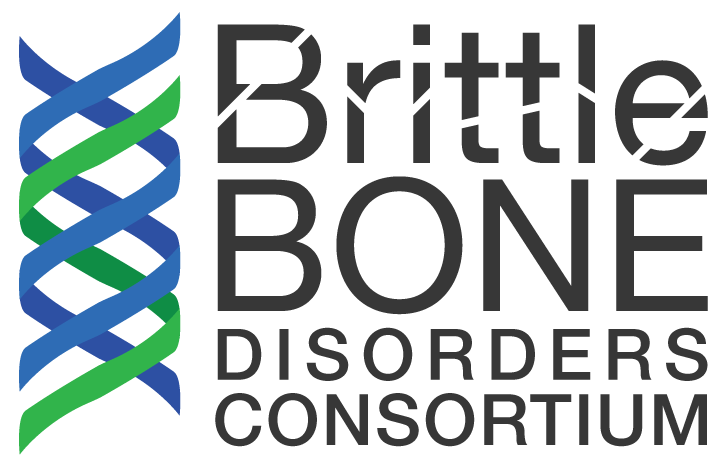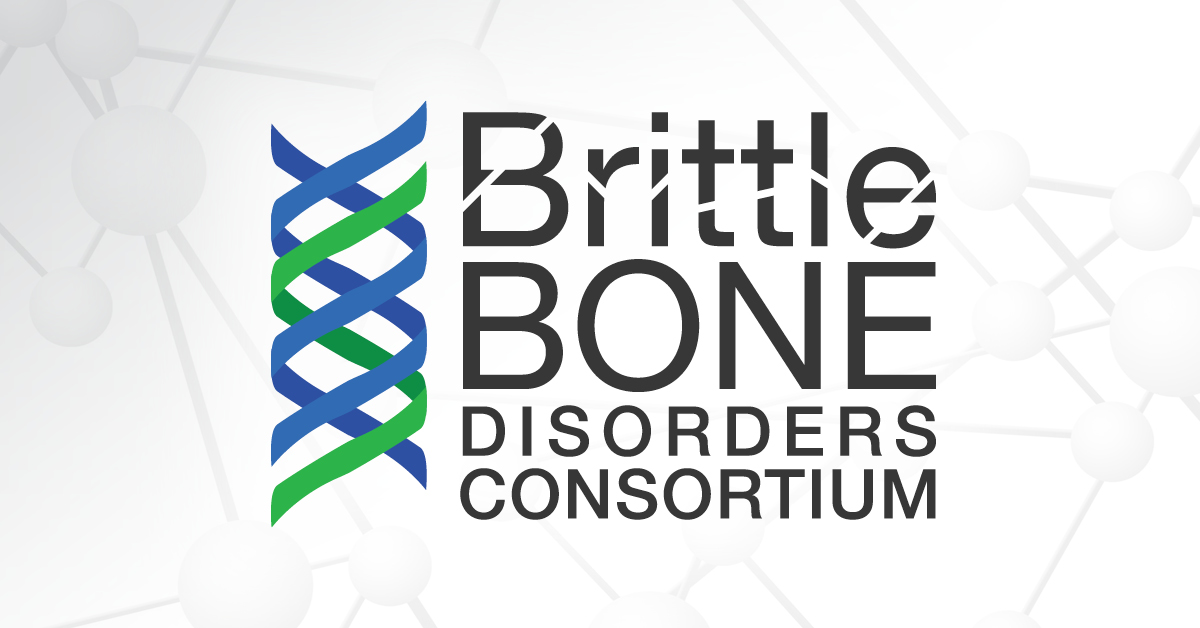The Brittle Bone Disorders Consortium (BBDC) (https://www.rdcrn.org/bbd) brings together physicians, researchers and educators to learn more about osteogenesis imperfecta. The goal is to develop new and better treatments for patients with the disorder. Through research, the BBDC is discovering new biomarkers of the disease that will lead to a deeper understanding of underlying pathophysiology of OI as well as assessing response to therapies. Clinical trials test promising new drugs for treating patients. The BBDC also established a patient registry and helps to connect those who wish to get involved with support groups, research and clinical trials. The partnership with the Osteogenesis Imperfecta Foundation and all of the families with OI is a critical component of the BBDC mission. Today’s research is possible because of the help from the OI Foundation-supported Linked Clinical Research Centers (LCRC) and patient participation.
What is Osteogenesis Imperfecta?
OI is a genetic disorder of connective tissue and in addition to bone fragility, can cause sensorineural or conductive hearing loss, scoliosis, decreased pulmonary function, and abnormal dental and craniofacial development. The phenotypic presentation can range from a perinatal lethal condition (type II OI) to only minimal disease burden (type I OI), with a wide range of phenotypes in between. There is significant locus heterogeneity in OI with over a dozen individual causative genes identified to date. While most cases of OI are dominantly inherited, there are many recessive forms mostly related to abnormal type I collagen modification and processing.
Goals of the Consortium
The consortium has three primary goals. One is to gain a better understanding of all genetic forms of OI by maintaining a contact registry and by enrolling a large group of patients with OI into an observational cohort study. The second is to expand treatment options by conducting clinical trials of promising new drugs for the treatment of OI. The consortium also plans to initiate other pilot studies focused on developing measures of quality of care and identification of new biomarkers. The third goal is to implement training programs for the next generation of physicians and scientists in the area of genetic bone disease.
Current Observational Studies
Through a natural history study of 1000 individuals with OI, the BBDC is investigating the disease progression and response to therapies for people with recessive and dominant forms of OI by:
- Examining pulmonary function and quality of life for children with scoliosis
- Observing effects of bisphosphonates on vertebral compression fractures and disease progression
- Examining oral health and its impact on quality of life
- Studying teeth alignment and craniofacial development
- Studying post-partum hemorrhaging during pregnancies of those in the OI registry
New Treatment in Clinical Trials
The current care for severe types of OI typically involves the use of medications (bisphosphonates) and surgery to put rods in bones to straighten and/or strengthen them. Little is known about the long-term effects of these interventions on bone and other body systems. The BBDC is currently trying to determine the safety and effectiveness of using the anti-TGFβ antibody fresolimumab to treat OI in adults.
TGF-β is a protein important in bone formation. Studies have shown that increased TGF-β activity leads to lower bone mass and strength and increased fractures. Fresolimumab is an antibody that can silence TGF-β. In studies in mice with OI, BBDC researchers have shown that silencing TGF-β can lead to higher bone mass, quality and strength. The goal is to achieve those same results in study participants. Four participants have enrolled in the first stage of the study and recruitment for the second stage is planned for March 2019.
PROMIS study
The BBDC seeks to explore the patient perspective in order to find the most effective treatments. Patients answer quality of life questions using the Patient-Reported Outcome Measurement Information System® (PROMIS®). Those patients are found through the BBDC Contact Registry for people with OI, managed by the Rare Disease Clinical Research Network (RDCRN). With this research, the BBDC also explores the feasibility of using a registry to recruit individuals with OI to report on their health status.
The overall goal is to develop more refined measures of outcomes to be used in clinical trials, identify areas in which new intervention strategies are needed, and to enhance communication of health and disease management findings back to the OI community, especially to those who do not have access to major OI clinical centers.
BBDC Training and Outreach
The BBDC seeks to train the next generation of investigators in the field of OI. The Geisman Fellowship provides funding for trainees interested in rare bone disease research. Seven trainees have completed the program with research projects that include: New Mechanisms and Therapies through Collagen Chaperones, Study of the IFITM5 recurrent mutation and the disease-causing mechanism in OI type V, Musculoskeletal Biomechanics in Osteogenesis Imperfecta (OI), and A Multicenter North American Study of Mobility in Osteogenesis Imperfecta.
With the help of the Osteogenesis Imperfecta Foundation, the BBDC is educating other medical professionals about the discoveries and advances in treatment of OI. The BBDC is a resource for physicians around the country to help improve the lives of patients with OI.
The participating clinical sites for the Brittle Bone Disorders Consortium are:
- Principal Investigator: Brendan Lee, MD, PhD
- Baylor College of Medicine PI: V. Reid Sutton, MD
- Children’s National Medical Center PI: Laura Tosi, MD
- Hospital for Special Surgery PI: Cathleen Raggio MD
- Kennedy Krieger Institute / Hugo W. Moser Research Institute PI: Mahim Jain, MD
- Nemours Children’s Hospital PI: Michael Bober, MD
- Shriners Hospital for Children, Chicago / Marquette University PI: Peter Smith, MD, Co-PI: Gerald Harris, PhD, PE
- Shriners Hospital for Children, Montreal PI: Frank Rauch, MD
- Shriners Hospital for Children, Tampa PI: Danielle Gomez, MD
- Oregon Health & Science, University PI: Eric Orwoll, MD
- University of California Los Angeles PI: Deborah Krakow, MD
- University of Cologne PI: Oliver Semler, MD
- University of Nebraska Medical Center with Children’s Hospital & Medical Center PI: Maegan Wallace, MD
- Patient Advocacy Partner Osteogenesis Imperfecta Foundation: Principal Investigator: Tracy Hart, CEO
- Data Management and Coordinating Center: University of South Florida Principal Investigator: Jeff Krischer PhD
- University of Washington Principal Investigator: David Eyre PhD
The Brittle Bone Disease Consortium (1U54AR068069-0) is a part of the National Center for Advancing Translational Sciences (NCATS) Rare Diseases Clinical Research Network (RDCRN), and is funded through a collaboration between the Office of Rare Diseases Research (ORDR), NCATS, the National Institute of Arthritis and Musculoskeletal and Skin Diseases (NIAMS), and the National Institute of Dental and Craniofacial Research (NIDCR).The content is solely the responsibility of the authors and does not necessarily represent the official views of the National Institutes of Health.
The Brittle Bone Disease Consortium is also supported by the Osteogenesis Imperfecta Foundation.


